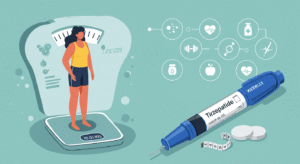Hormones play a crucial role in the process of lactation and breastfeeding, orchestrating a complex interplay that ensures the production and release of breast milk. The primary hormones involved in this process are prolactin, oxytocin, estrogen, and progesterone, each contributing uniquely to different stages of milk production and ejection.
Prolactin, produced by the anterior pituitary gland, is the cornerstone hormone for milk production. During pregnancy, prolactin levels increase, preparing the mammary glands for lactation. After childbirth, the infant’s suckling stimulates the production of prolactin, which in turn promotes the synthesis and secretion of milk by the alveolar cells in the mammary glands. The level of prolactin is directly proportional to the frequency and intensity of nursing, ensuring that milk production meets the infant’s needs.
Oxytocin, also produced by the pituitary gland, plays a vital role in the milk ejection reflex, commonly known as the “let-down” reflex. When the baby suckles, oxytocin is released into the bloodstream, causing the smooth muscle cells around the alveoli to contract. This contraction propels the milk through the ducts towards the nipple, making it available to the infant. Oxytocin also promotes a sense of bonding and emotional connection between the mother and the baby, enhancing the breastfeeding experience.
Estrogen and progesterone, predominantly produced by the ovaries, also have significant roles during pregnancy and lactation. During pregnancy, high levels of estrogen and progesterone prepare the breast tissue for lactation by promoting the growth and differentiation of the mammary glands. However, these hormones inhibit milk production by blocking the action of prolactin. After childbirth, the levels of estrogen and progesterone drop sharply, lifting this inhibition and allowing prolactin to stimulate milk production effectively.
Apart from these primary hormones, other hormones like human placental lactogen (hPL) and cortisol also contribute to the lactation process. hPL, produced by the placenta, works alongside prolactin to prepare the mammary glands during pregnancy. Cortisol, a stress hormone produced by the adrenal glands, helps in the development of the mammary tissue and supports the metabolic processes involved in milk production.
The balance and interaction of these hormones are critical for successful lactation and breastfeeding. Any disruption in this hormonal equilibrium can lead to lactation issues such as insufficient milk supply or difficulties in milk ejection. Conditions such as postpartum thyroiditis or hormonal imbalances caused by certain medications can affect lactation. Therefore, it is essential for healthcare providers to monitor and manage hormonal levels in breastfeeding mothers to ensure optimal milk production and breastfeeding success.
In conclusion, the hormonal regulation of lactation and breastfeeding is a finely tuned process involving the coordinated action of prolactin, oxytocin, estrogen, progesterone, and other supportive hormones. Understanding the roles and interactions of these hormones can help in addressing breastfeeding challenges and promoting maternal and infant health. Effective lactation management and support are crucial for fostering a successful breastfeeding relationship, which has numerous benefits for both mother and child.


